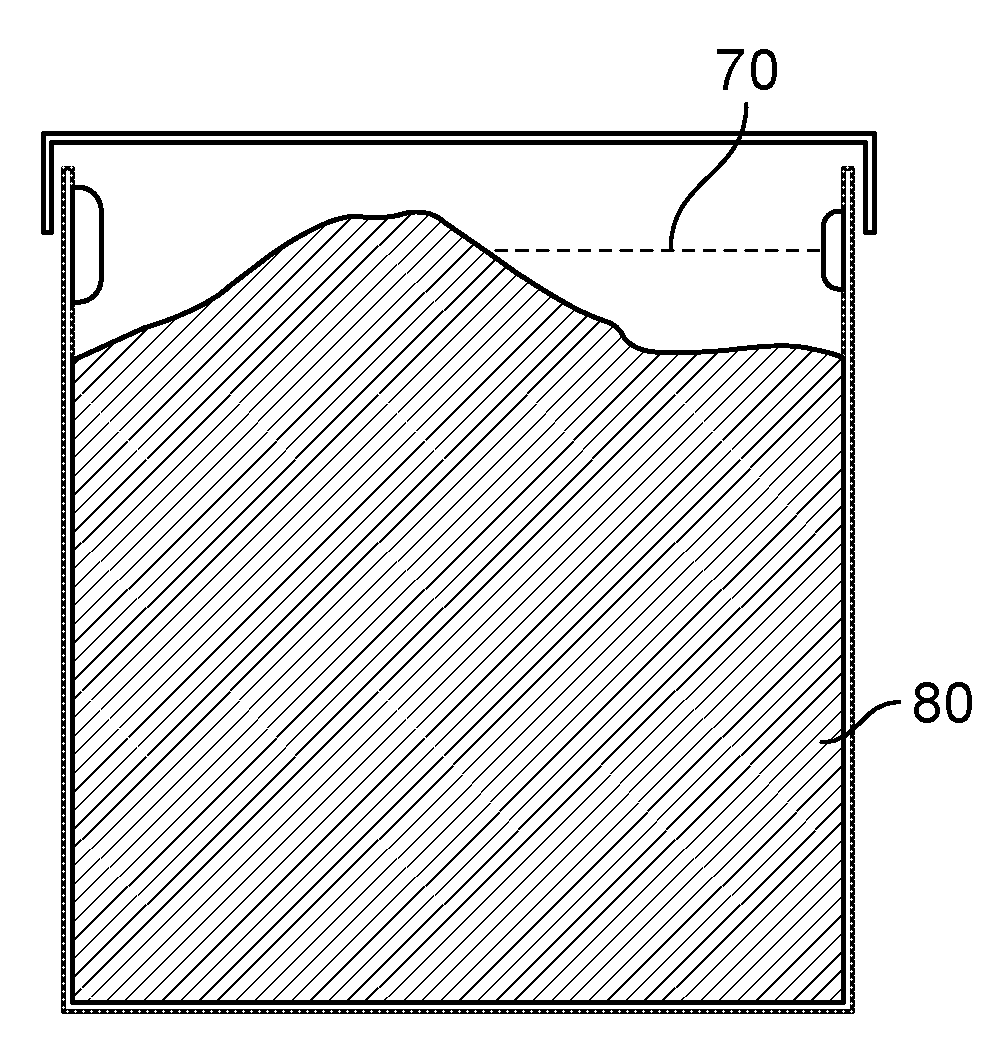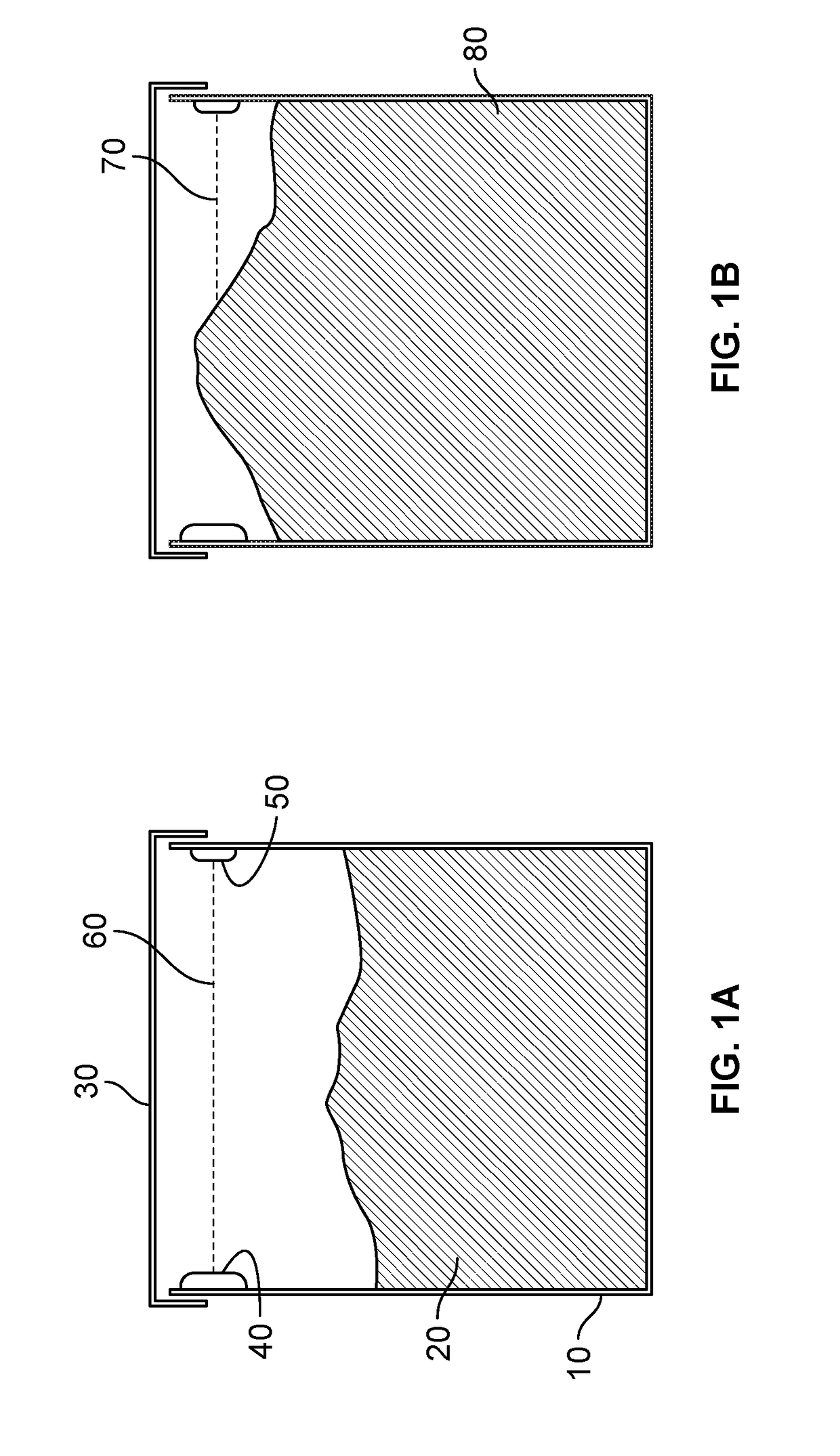Techniques for optimally sensing full containers
a technology of full container and optimal sensing, applied in the field of waste management, can solve problems such as excessive electrical current consumption of sensors
- Summary
- Abstract
- Description
- Claims
- Application Information
AI Technical Summary
Benefits of technology
Problems solved by technology
Method used
Image
Examples
Embodiment Construction
[0009]Referring now to the invention in more detail, in FIG. 1 there is shown a container 10 with substantially vertical side walls and a covering lid 30, and containing a quantum of waste material 20. The container is fitted with a pair of sensor modules, consisting of an Infra-Red Emitter module 50 and an Infra-Red Receiver module 40. The Emitter module emits a pulsed beam of near Infra-Red light modulated with a unique coding pattern according to a pre-defined timing schedule. If the container is not full beyond the limit line set by the linear line 60 connecting the emitter and receiver modules, then the unique coding pattern will be received and recognized by the Receiver module and this can be interpreted as an indication that the container is not full. Conversely, if the container is full 80 beyond the limit line set by the linear line connecting the transmitter and receiver elements, then the beam of near Infra-Red light will be blocked 70 and the unique coding pattern will ...
PUM
 Login to View More
Login to View More Abstract
Description
Claims
Application Information
 Login to View More
Login to View More - R&D
- Intellectual Property
- Life Sciences
- Materials
- Tech Scout
- Unparalleled Data Quality
- Higher Quality Content
- 60% Fewer Hallucinations
Browse by: Latest US Patents, China's latest patents, Technical Efficacy Thesaurus, Application Domain, Technology Topic, Popular Technical Reports.
© 2025 PatSnap. All rights reserved.Legal|Privacy policy|Modern Slavery Act Transparency Statement|Sitemap|About US| Contact US: help@patsnap.com



